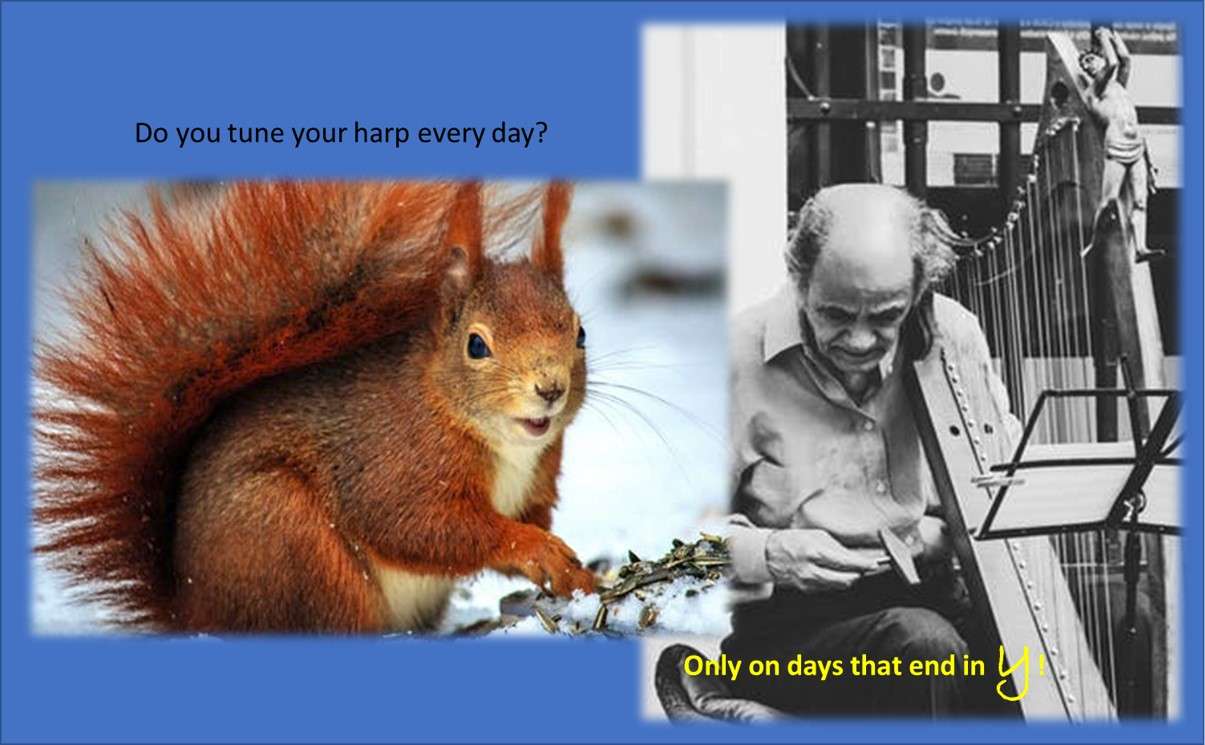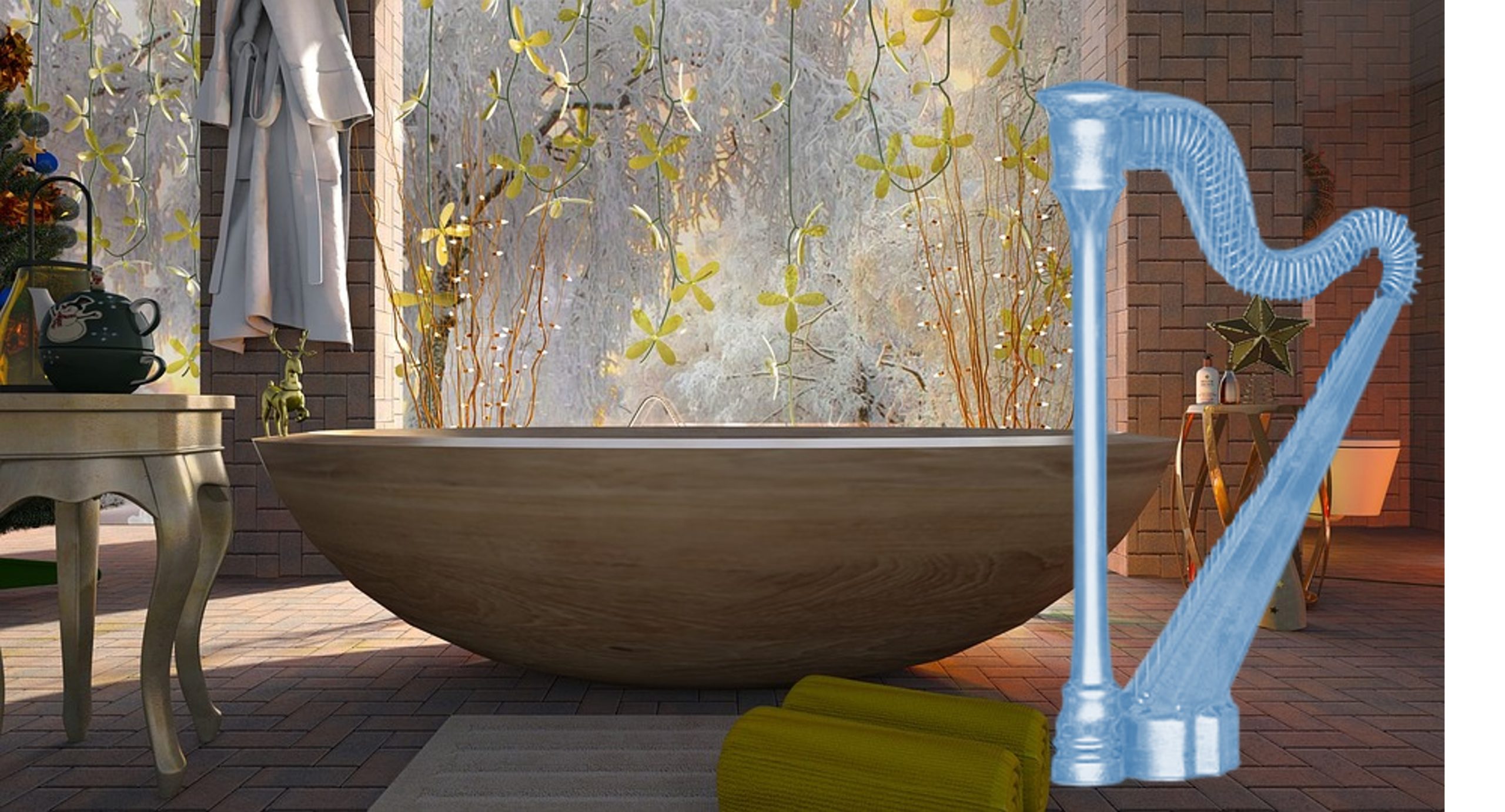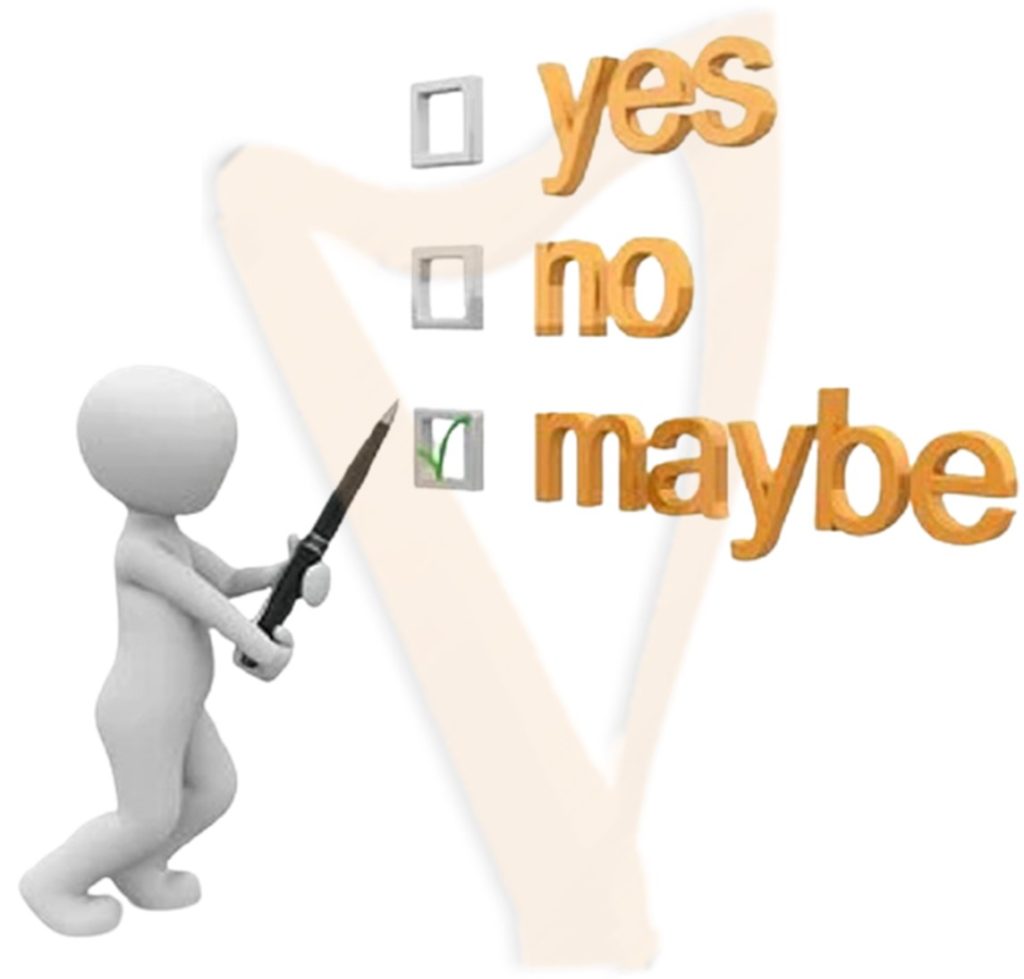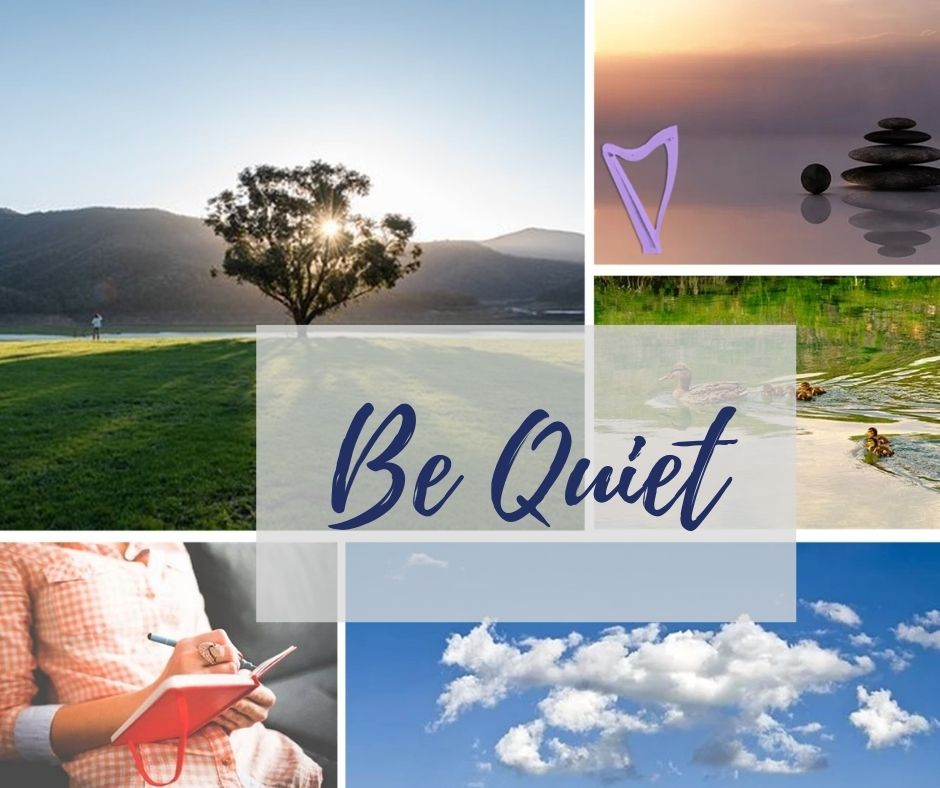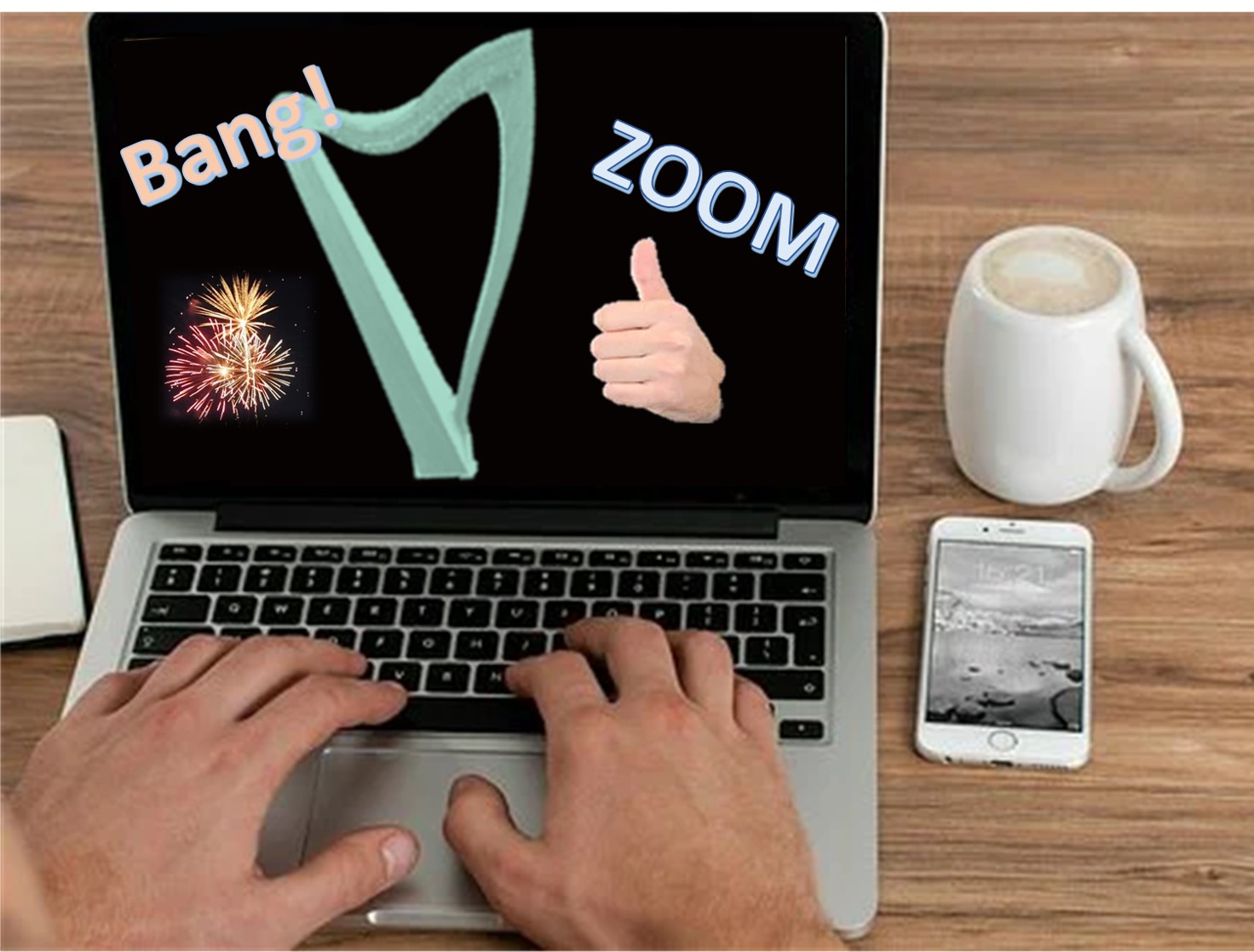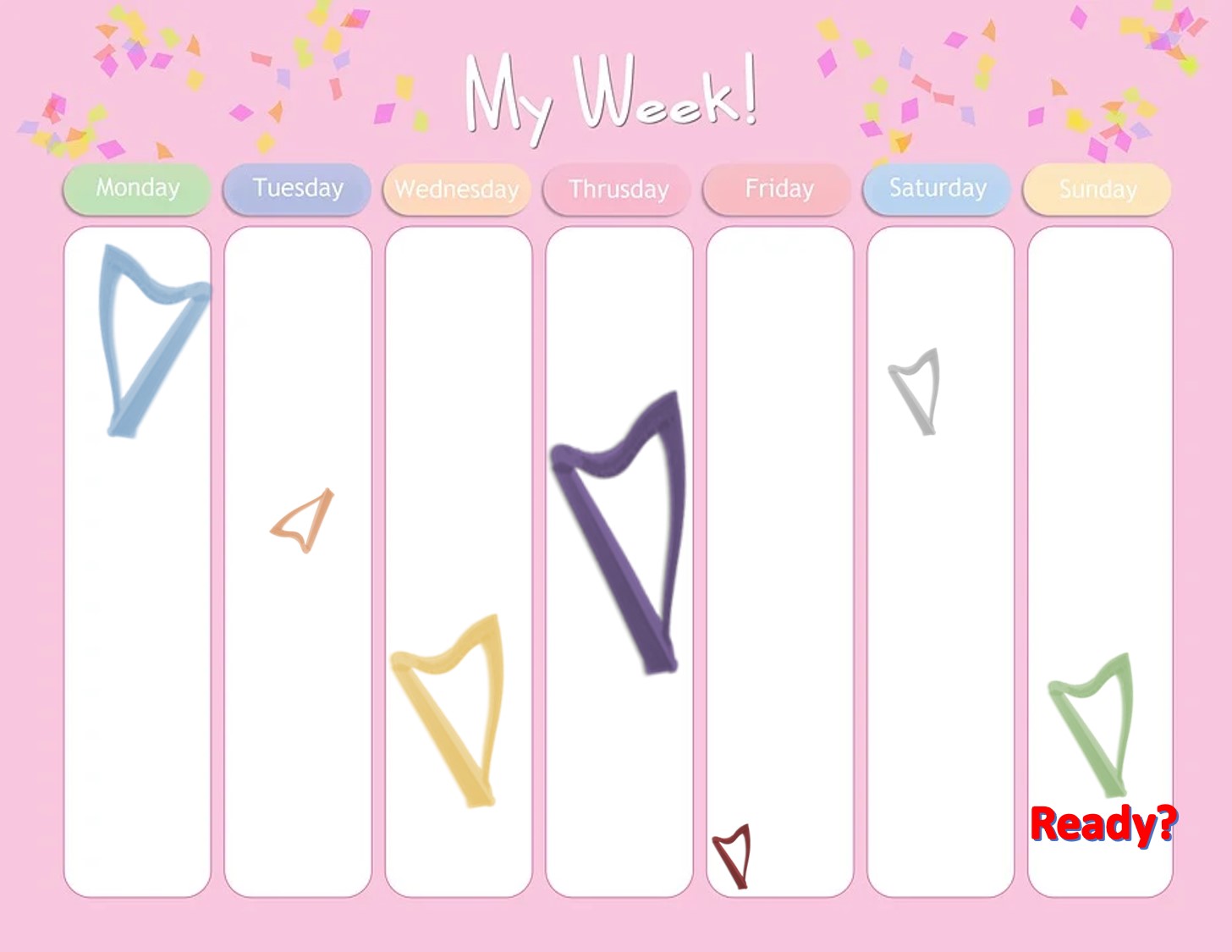Spring has sprung the grass is griz! Time to shake off the lingering winter blahs! It’s Spring Cleaning Time.
Ugh, it’s bad enough to pretend like you’re going to air the linens and beat the rugs and clean behind the washer, but it’s worse that we know we could also spring clean our music life. Just ugh. Not my favorite time of year, but a necessary evil activity.
Because, just as our closets cause things to disappear (but also to multiply (and shrink!)), our harp lives can also generate detritus and, well, frankly, dust!
So, what would a Spring Cleaning of our Harp lives look like? There are a lot of things we could do including:
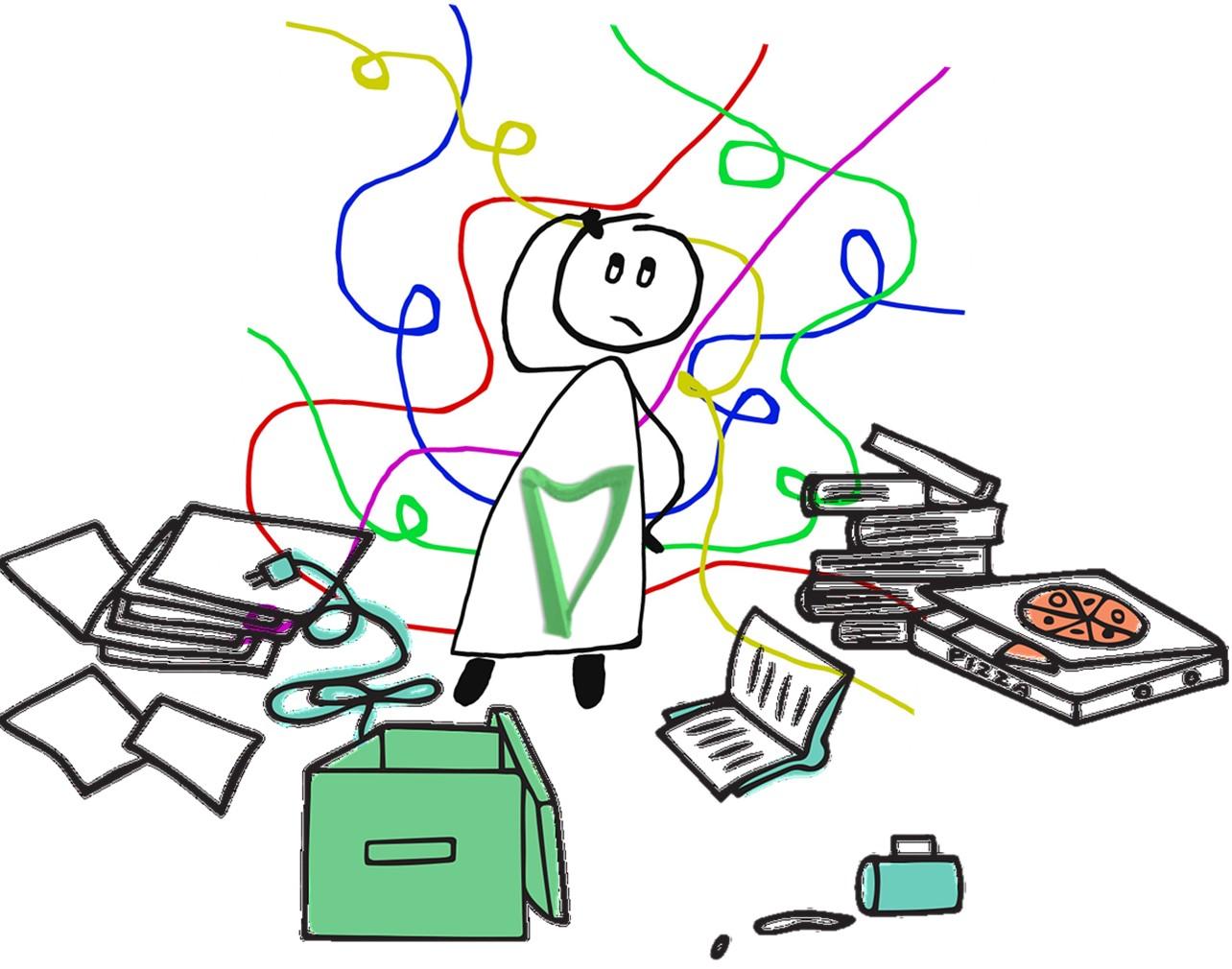 Clear off your music stand(s)! Is your music stand a nightmare like mine (again)? It’s probably also a fire hazard! So much paper. So many projects. So much potential to drop it all and get everything mixed up! And this is only one of them (yes, there’s another one for teaching – same sorry state, just different music). It really is an indication of the churn of my thoughts. A music stand is meant to hold the music you are playing – not to be seconded as a desk. When you let everything pile up and get jumbled, not only is it slightly hazardous (ref fire and spillage above), but it also actively interferes with your work. What’s at the back will be hidden (and likely forgotten and later presumed lost). What’s in front will distract you from the other things that are in front but just behind them. Take some time to sort through it and you’ll be amazed how much freer you will feel to play!
Clear off your music stand(s)! Is your music stand a nightmare like mine (again)? It’s probably also a fire hazard! So much paper. So many projects. So much potential to drop it all and get everything mixed up! And this is only one of them (yes, there’s another one for teaching – same sorry state, just different music). It really is an indication of the churn of my thoughts. A music stand is meant to hold the music you are playing – not to be seconded as a desk. When you let everything pile up and get jumbled, not only is it slightly hazardous (ref fire and spillage above), but it also actively interferes with your work. What’s at the back will be hidden (and likely forgotten and later presumed lost). What’s in front will distract you from the other things that are in front but just behind them. Take some time to sort through it and you’ll be amazed how much freer you will feel to play!
If everything is important, then nothing is important,
so prioritize the music (and notes). I’m not averse to “horizontal filing” if that’s your thing (it is mine) but use a desk, table or the floor so you can keep straight what you’re working on with which layer (trying to learn, barely learned, ready to polish, etc.). Don’t let your projects get swallowed up by the Music Stand of Doom (cue scary music!).
Tidy your space – now that you’re on a roll, don’t stop! Now you can move on to the rest of your space. Dust your harp and the legs of your bench (and your bench if you’ve not been practicing so much). It is Spring Cleaning, so move your harp and your bench and vacuum underneath. Put away music you’re not using and dust the storage. Throw away the pens that no longer write, sharpen the pencils. Wash your coffee cup(s). If you have a music desk, clear it off and wipe it down. Yup, this is the romantic part of being a musician. If you have windows, air out the room a bit too.
Sort your paraphernalia – we’re musicians, we collect a lot of useful stuff. Sometimes we collect too much useful stuff. Sort through it all. Do you have a full set of replacement strings (and do you know where it is)? If not, order the ones you need. Toss the string leavings – or cut them in to string ends for later. How many nail clippers do you need right by your harp? Are all your tuners and tuning keys collected in a space where you can find them? Are your index cards in a file box (and in order)? Have you put your cases away or are you still tripping over them? Dust all your harp tchotchkes (and fondly remember who gave you each one as an encouragement and in appreciation of your music-y-ness).
Sort your Music – Did you know that there’s no prize for the person who collects the most harp music? Or that you’re unlikely to surpass the Library of Congress with your giant collection? One of the best things I have recently seen was from A Slob Comes Clean who says that if you can’t find (something), you don’t have it. So, here’s a good time to sort, organize (and purge) all your music – so you can find it! Be it sheet music, audio files (come on, I know some of you still have cassette tapes you made at some workshop you took in a year that started with a 1), videos, or velum handwritten by monks, you can’t learn, practice, and play music you don’t know you have. Don’t let anyone tell you how to organize it – suit yourself and sort and organize your stuff in a way you can use. I have sheet music sorted by title (the title it has in my mind – whether that’s in English, Gaelic, Irish, Welsh, or whatever (including tunes that I think of as “that tune I learned from….” and are filed by the person’s name). I have my books sorted by place/style (Scottish, Irish, American, broken classy (baroque and classical), piano, bagpipe, fiddle, song, and borrowed). CDs (sadly) are sorted by last listened to (ok, they’re not really sorted). Never lose sight of the reality that organization is defined by the user not some on-line guru!
Clear out the pockets of your cases – Did you know that a harp case pocket can hold all the contents of Fibber McGee’s closet? I am certain that my 18-pound harp weighs about two megatons in its case. I pulled out about six million old set lists, a fistful of programs, seventeen harp keys, twelve tuners, four thousand pencils, three hundred hair clips, a dozen cookies, three pairs of gloves, two chapsticks, and a partridge with its accompanying pear tree. I found out my dog hadn’t run away*. After removing all that, then it weighed about four ounces**. The pockets are large. And they are deep. Horror movie plots have been written about the depths of the harp case pocket. You might want to check yours and give it a clear out. Your back and shoulder will thank you too.
Get your harp regulated – no, seriously. And no, my beloved luthier didn’t pay for product placement. But really – how long are you going to go on playing slightly out of tune because your levers aren’t spot on? Take care of your harp. If you have the patience, tools, and know-how do it yourself, otherwise, visit your luthiers – they miss you!
Instill some order so you have a space in which you can create! Imagine how much more pleasant it will be to play in your newly spiffed space! It will be so much better if you have spring cleaned for your harp. Do it now while spring is young and we’re not entirely sure we’ve seen the last frost.
Do it for your harp, but more importantly do it for you! What Harp Spring Cleaning tasks do you do? Let me know in the comments!
* Joking.
**Still joking – it still weighs 18 pounds.

